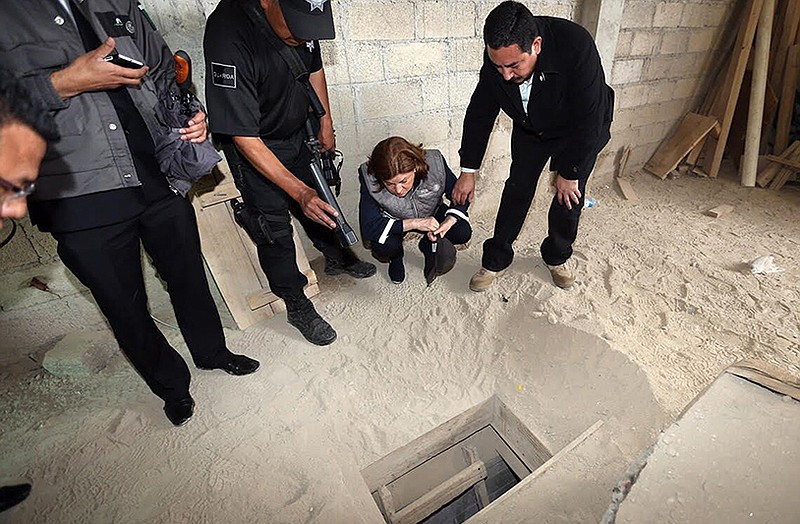ALMOLOYA, Mexico (AP) - The digging would have caused noise. The planners would have needed blueprints and maps. The escape was made from the one place beyond the view of security cameras at Mexico's toughest prison.
As authorities hunted Monday for any sign of Mexico's most powerful drug lord, security experts said it's clear that Joaquin "El Chapo" Guzman's escape through an elaborately designed tunnel must have involved help on a grand scale.
"How did Chapo escape? In one word: corruption," wrote Alejandro Hope, a former member of Mexico's domestic intelligence service, in his blog El Daily Post.
"He escaped through a mile-long tunnel, wide enough to hold a motorcycle, and ending in one of the few blind spots in Mexico's most-secure prison. How do you do that without some high-level corruption?"
U.S. authorities believe the tunnel through which Guzman made his audacious exit Saturday evening must have been in the works for at least a year, nearly as long as the head of the notorious Sinaloa Cartel had been at the prison 55 miles west of Mexico City.
A tunnel of such sophistication - with lights, air venting, and a customized motorcycle rigged up on a rail line - would have taken 18 months to two years to complete, said Jim Dinkins, former head of Immigration and Customs Enforcement's Homeland Security Investigations.
"When it's for the boss, you probably put that on high speed," he said.
If anyone was capable of pulling off such a feat, it was Guzman, who is believed to have at least a quarter-century of experience in building large, sophisticated tunnels to deliver contraband under the U.S.-Mexico border and to escape from hideouts as authorities closed in.
Guzman must have had cooperation from government officials given the passage's length and sophistication, and the time required to build it, said Joe Garcia, who retired this year as interim special agent in charge of U.S. Homeland Security Investigations in San Diego.
DEA documents obtained by The Associated Press on Monday show work on hatching escape plots began almost immediately after Guzman was arrested in February 2014 and that he remained in charge of the Sinaloa cartel despite being locked up.
To pull off such a feat, rescuers likely had intelligence on the prison even before Guzman was arrested, Dinkins said.

